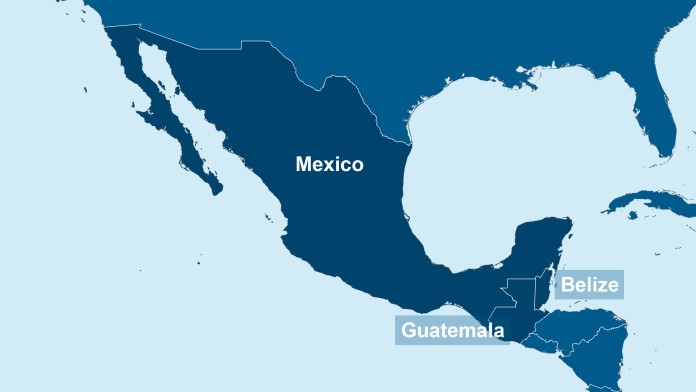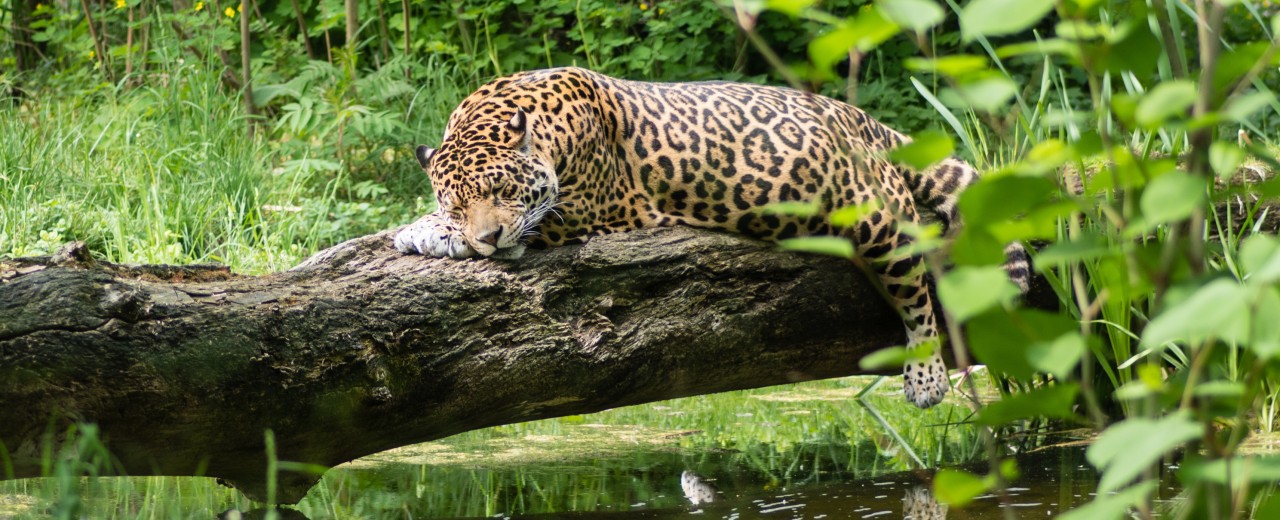
As of: 07/2025
In the border region between Mexico, Guatemala and Belize, there is a vast rainforest that is home to rare plant and animal species as well as historic Mayan cultural sites. This rainforest is partly classified as protected but is threatened by illegal logging, forest fires and unsustainable agriculture. KfW is working on behalf of the German Federal Government to support the integrated management of the natural and cultural resources across the borders of the three countries. It is providing over EUR 20 million for the project.
In the triangle where the borders of Mexico, Guatemala and Belize converge lies the Selva Maya, the largest rainforest area in Latin America after the Amazon, covering more than ten million hectares. Of these, four million hectares are currently under conservation. This unique ecosystem is home to exceptional biodiversity, including endemic and endangered species, such as howler monkeys, jaguars, pumas, tapirs and toucans. The extensive forests regulate the water balance of the entire region and function as important carbon sinks.
Although this ecosystem is still largely intact, it is exposed to a range of threats: increasing fragmentation and degradation are destroying its functions. The population in the region is growing rapidly and is resorting to slash-and-burn farming to attain land for agriculture. Wood is also felled illegally. Livestock farming, hunting and wildlife trafficking are also among those human activities that threaten the ecosystems of the Selva Maya.
Conservation rules are often disregarded due to the weak nature of the state institutions in the region, inadequate monitoring of compliance with the rules and, in some cases, unclear responsibilities. Illegal changes in land use are therefore rarely punished. Only cross-border cooperation can effectively ensure protection of the Selva Maya.

The aim of the regional project is to preserve the ecosystem's functions and cultural values of the region. Women and indigenous people, in particular, should also be specifically involved and promoted. German financial and technical cooperation has already helped bring the three countries involved and the Central American Commission for the Environment and Development (CCAD) together to protect the Selva Maya and agree on a common strategy. It has also supported the founding of a “Strategic Coordination Group” (Grupo Estratégico de Cooperación/GEC), in which the state protected-area organisations can exchange experiences. The group now meets regularly.
On behalf of the Federal Ministry for Economic Cooperation and Development (BMZ), KfW is providing EUR 20.5 million for the project, which is being implemented by the International Union for Conservation of Nature (IUCN) in close coordination with CCAD. It will organise idea competitions to promote projects of the local partner organisation. These projects must be implemented concurrently in at least two of the three participating countries and aim to stop the destruction of the rainforest and secure the livelihoods of the local population.
The project pursues three central objectives:
Roughly one million people live in the entire region of the Selva Maya. Some 15,000 people will benefit directly from the project, These are mainly low-income families who subsist on agriculture and are also dependent on the use of protected areas, for example for wood or honey procurement. Tourism plays an important role, especially near accessible Mayan ruins. Preserving the ecosystem of the Selva Maya as well as its cultural sites safeguards the livelihoods of these mainly poor people.
The entire region benefits from the protection and preservation of the rainforest and its important role in regulating the water balance and climate cycles. The project contributes to climate change mitigation and biodiversity conservation by reducing deforestation and preventing forest fires.
The project contributes to the achievement of these following United Nations Sustainable Development Goals:
KfW Group
KfW Development Bank
Country sector principles/Latin America
Biodiversity and natural resources
Share page
To share the content of this page with your network, click on one of the icons below.
Note on data protection: When you share content, your personal data is transferred to the selected network.
Data protection
Alternatively, you can also copy the short link: https://www.kfw-entwicklungsbank.de/s/enzBx42d
Copy link Link copied